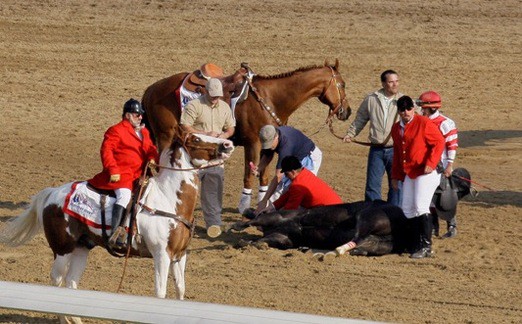Share
Bill Henson at the Opera
I went to see a few of the short films at the Tribeca Film Festival this weekend, and was so struck by some of the imagery that it stuck in my head...

I
went to see a few of the short films at the Tribeca Film Festival this
weekend, and was so struck by some of the imagery that it stuck in my
head for hours afterwards. I always remember images more than narrative.
The seven shorts we saw were all centered on themes of coming-of-age, and the morning after, I felt compelled to pull out Mnemosyne,
Bill Henson’s 2005 definitive retrospective book from Scalo. This is
perhaps my most prized photo book of all; I discovered his portraits of
adolescents adrift in the night while a PE at Nerve.com, and was
absolutely transfixed. Henson is Australian, and his catalog is deep;
included in this book are projects that span twenty years, starting in
the mid-seventies, including a project on ballet, body and nude
portraits, photographs of street-crowds, Baroque
Triptychs, pictures taken
in the Australian suburbs and Egypt, Los Angeles and
New York nightscapes, and his famous cut-out collages shown
at the centenary Venice Biennale in 1995.
But this time, it was the magical compositions of Henson’s Paris Opera Project
from 1990-91 that grabbed me. I can’t quite understand how he was able
to make these images; the lighting is simply stunning, and the poses as
lyrical as it gets. I did a little hunting around, and found an interview by Dominic Sidhu with Henson at EGO Magazine that answers some of my questions. The most topical:
The figures seem darkened or rather that they are moving in and out of imposed darkness. How do you achieve your effect?
I always shoot on negative film because it has potential for far
greater extremes in lighting situations. And also, negative film is
designed to be half the process, the second half being the making of
the print. More often than not, I make test prints and let them sit
around in a kind of semi-finished state. Gradually, my ideas start to
shift as to what this image could be about and how I should modulate it
formally and technically. It is quite a lengthy process. I go into the
darkroom, change the density of some areas, or maybe change the
emphasis between various elements within the picture, and push it
around.
The exhibition prints don’t look anything like the original negative
that came out of the camera. My work is all done in the traditional
manner in the darkroom; there’s no digital technology in there mainly
because I do not find it useful for my work.
With the Paris Opera House series, you spoke about a universal primal reaction to music that is beyond class distinctions.
What I was interested in terms of Paris Opera series was that whole
strange business of finding oneself with a whole lot of other people
gathered in a darkened space, such as the opera, awaiting some special
event. There is something quite magical about it. I’ve always found
that people sitting in the dark just waiting for something is the most
haunting sort of experience. It seemed to me it was a common
experience, a universal thing that everyone feels, really, at some
point or another.
Your teenage subjects seem to exist outside of society in an almost hypnotic state.
The reason I like working with teenagers is because they represent a
kind of breach between the dimensions that people cross through. The
classical root of the word “adolescence” means to grow towards
something. I am fascinated with that interval, that sort of highly
ambiguous and uncertain period where you have an exponential growth of
experience and knowledge, but also a kind of tenuous grasp on the
certainties of adult life.
There is a kind of removal in your pictures. It’s as if the emptiness
in the photograph, the disappearance of detail, and the figure within
in it become the focus of the photograph rather than the subject
itself.
Well, putting it in other words, the photograph has to suggest, not
prescribe. Any work of art needs to do that. From my point of view, art
is what almost goes missing in the shadows. It is what is not clearly
delineated but, in fact, just suggested. Rather than the clearly
described surface detail of a highlight of skin, or the surface of a
tree or something, it’s when the light slides off into a sort of half
shadow and darkness. It is the way in which you somehow have something,
but do not have it, that offers the greatest potential.















